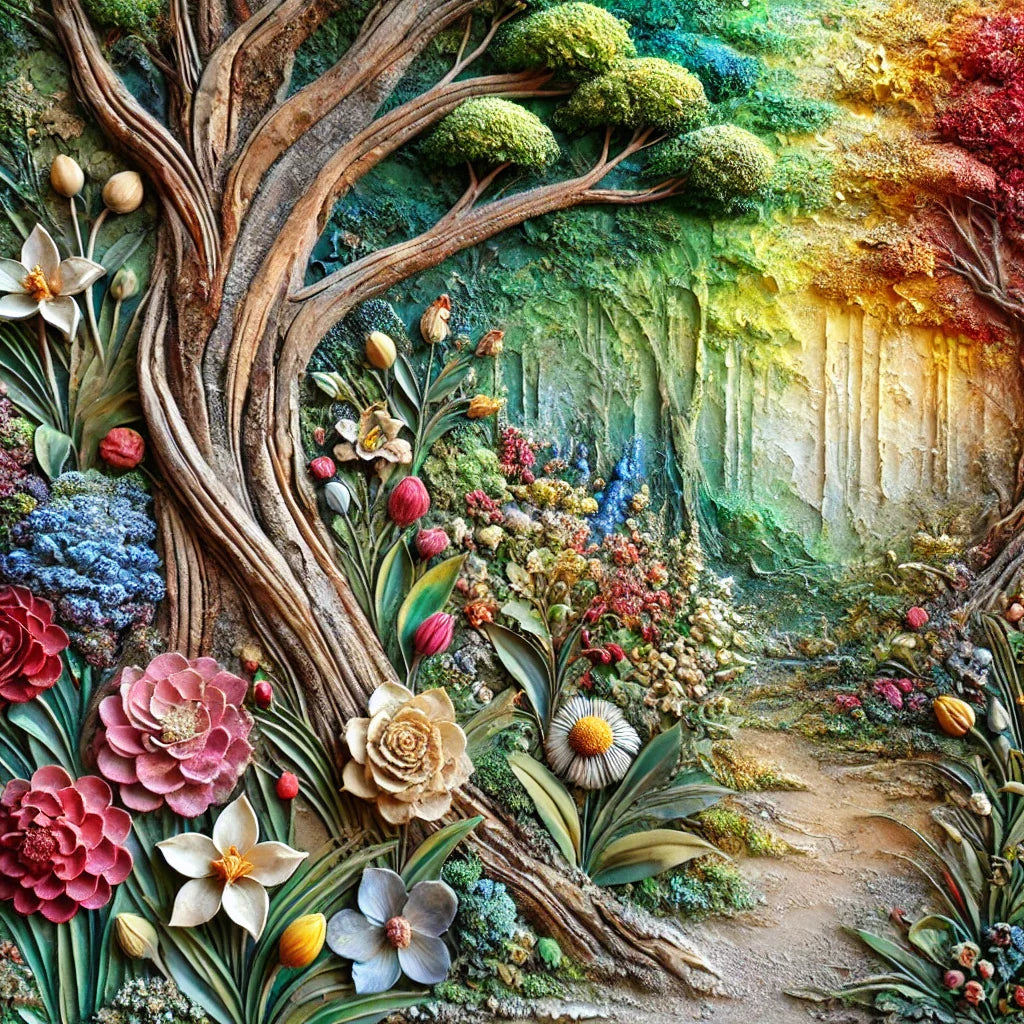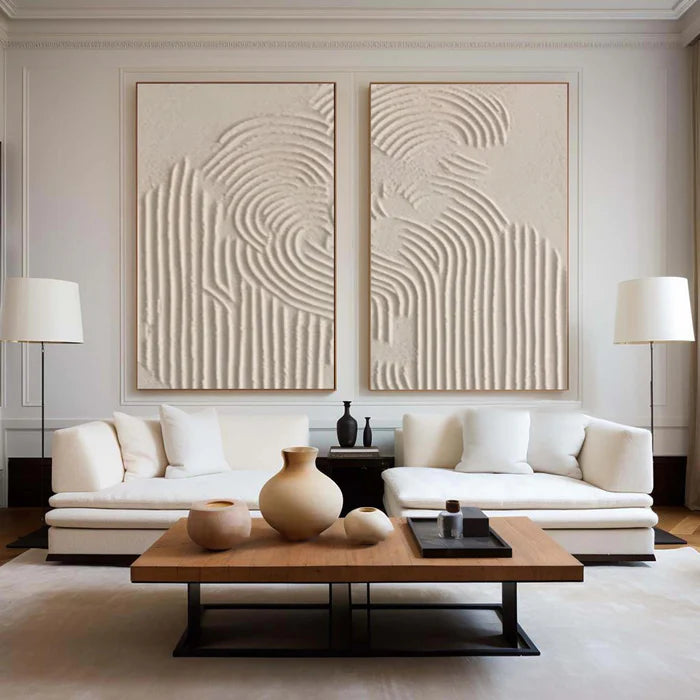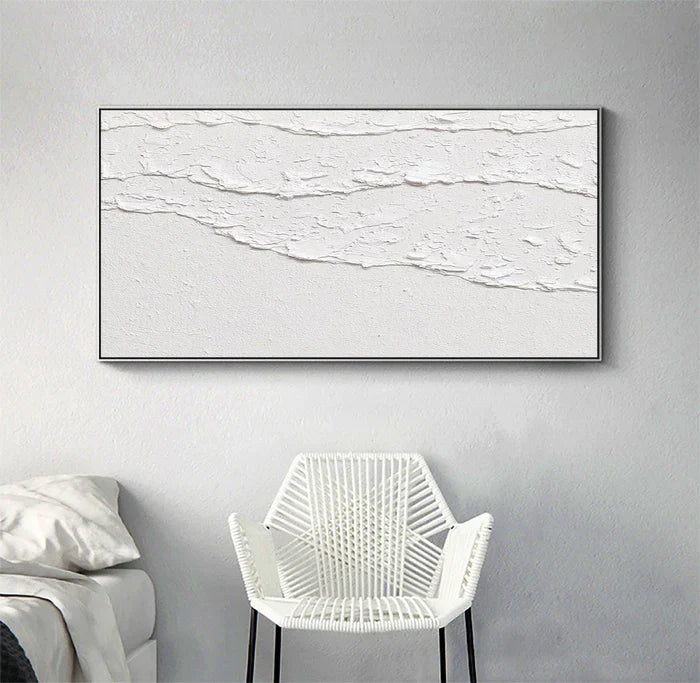
Exploring Flower and Tree Textured Art: A Blend of Nature and Creativity
Nature has been a key source of inspiration in art for centuries. Artists have long drawn from the beauty of flowers and trees, replicating their forms, colors, and details on canvas. Recently, flower and tree textured art has become a popular way to add depth and dimension to these nature-inspired pieces. In this blog post, we'll dive deep into the world of flower and tree textured art—what it is, how it's created, and how it can enhance your home or personal art collection.
What is Flower and Tree Textured Art?
Flower and tree texture art — flower and tree textured artwork may be described as visual (and physical) texture, visually activating natural elements like flowers, leaves, and trees. Textured artwork has much more depth and dimension than flat two-dimensional images, which gives life to the artwork and invites the audience to interact. The texture provides a tactile experience for the viewer, often bringing the art seemingly to life as flowers pop out of their wraps or tree bark tears into realistic-looking gnarls.
This type of art involves applied textures, accomplished through various means (e.g., layers of richly applied paint, modeling paste and other materials or even natural inclusions). Textured work of art includes a touch sensation to painting as a possible alternative acclimated; consequently, many get the usual.
Why is Nature a Popular Subject for Textured Art?

Nature, especially flowers and trees, has become an integral and common aspect of art. The question may arise as to why such a subject matter is highly amenable to using textured techniques. It is all in the finer details. A flower and a tree are full of rough or smooth patterns of textures, from the deep strengthening of tree trunks to the soft, smooth air whispering on the flower petals. Such minute particulars are hard to show on flat images since they are put over incised raised surfaces, but textured surfaces better suit this phenomenon.
Moreover, integrating nature into one's life has a calming effect on individuals. Therefore, implementing nature-inspired art, and sometimes even textual art, just makes the space soothing and comfortable. It is like having a small portion of nature inside the house.
Techniques Used in Flower and Tree Textured Art
Crafting texture-based art using flowers and trees requires more skills than painting. Artists' creativity goes a mile further, and they try different techniques to capture the ideas they have in mind that are influenced by the environment. The following are some basic styles often used in this kind of art.
Layering Paint
One of the quickest and most effective techniques for developing texture is using layers of paint. It is common to come across artists using thick paints like acrylics and layering them on the canvas until they come up. To create texture, more paint is often smeared using a palette knife to incorporate more depth. When creating tree bark texture, for example, the boldness of the marketers might depict the sturdy craftsmanship surfaces of tree trunks.
Using Modeling Paste
Modeling paste or texture paste is a material used to create three-dimensional designs on the canvas. After application and complete drying of the paste, it resembles a sculptural surface which can be painted over. This is also a very helpful practice in order to achieve the surface of tree trunks, petals or leafs etc.
Adding Natural Elements
Some of the artists go one step further and design paintings that cannot only be seen but also sniffed and touched. There are plants already in the canvas as on top of it, dried flowers and leaves, or even sand can be incorporated into the painting. This gives an opportunity to include some more realism into the impression as such surfaces have some natural processes and techniques.
Embossing
Another common technique in textured art is embossing. Either printed or embossed, the design is pressed or carved into the canvas or paint to add textured interest. You can do very detailed leaf veins and very quick tree bark.
Impasto Technique
Impasto is when paint is applied thick to the canvas, or a pallet knife is often used so it rises out from the surface. This works well in floral textured art because it gives the petals and leaves a feel of blooming out of the canvas. The impasto looks as if the piece is three-dimensional.
Why Choose Flower and Tree Textured Art for Your Space?
It is ideal to choose flower and tree-textured art for your home or workspace since this type of art has various benefits, not just in terms of aesthetics but also emotion. Take a look at the reasons why it is wise to invest in such interior decoration:
Connection to Nature
Humankind has inherent tendencies to develop links with their environment. Incorporating artwork containing such Habitats as flowers and trees can affect the homeowner’s state of mind geared towards relaxation and peace. Relief artworks also help to some extent because they have a three-dimensional aspect of appreciating artwork
Unique Visual Appeal
Textured art is more colorful than flat paintings as it adds depth and movement to the audience’s view. The striking feature of this type of art is its three-dimensional quality, which prompts the audience’s gaze toward it and encourages a closer inspection. It enhances the appeal and excitement of any space.
Versatile Decor
Flower and tree textures have a wide range of applications. They can be used in modern and classically styled interiors and will fit in well with many decorating motifs. Be it sleek minimalism or rustic woodsy textures, there is a place for textured art in your home.
Tactile Experience
An attractive trait of textured art that differentiates it from other types of painting is that it elicits and addresses the sense of touch. Texture art, unlike paintings, can be appreciated through sight, but the viewer cannot reach the actual surface. In the case of textured paintings, the viewer is allowed to touch and feel the painting with a sense of relief.
How to Incorporate Flower and Tree Textured Art in Your Home
Flower and tree-textured art can add great decor to any room. Here are some ways to include this art form in decor for your house or office:
Feature Wall
An oversized modern wall art piece with a beautiful textural tree or flower pattern can be the focal point of any living room or bedroom. It can help ground the area and enhance the overall design of the room.
Gallery Wall
Artwork in an eclectic gallery style combines more miniature textured art with any typical sky or wall-clad art. Instead of limiting each wall to a specific look, you can mix and match design elements around a central theme to make the wall enjoyable.
Outdoor Spaces
Textured art can be utilized in any open space, including indoor spaces. Some elements enhance nature or are inspired by nature. Pillars like these can accentuate extremely open spaces like patios, decks, and even sunrooms. The artwork will be in sync with the environment and enhance your environmental artwork.
Small Accents
If you are not yet ready for such a big photo, try cheating and taking a few small pieces of flower-texturing tree art to use as staging decor. These can be placed on side tables, shelves, or even in the hallway to add a little more of that nature to it.
How to Care for Textured Art
When it comes to textured art, especially ones with many natural elements, it seems that these pieces tend to be a little more delicate than just flat art. In the following, we will guide you about some valuable ideas on how to take care of your textured art:
Dust Regularly
It is quite obvious that dusty surfaces are likely to be found only on textured art. To remove them, the surface must be wiped with a softly dried piece of cloth or a soft brush.
Avoid Direct Sunlight
For the most part, sunlight is usually harmless; however, continuous exposure of artwork to it has the potential to alter colors. If such components appear in your art, the dried flowers or leaves will turn into brittle wares if exposed to sunlight for too long.
Handle with Care
The raised sides of textured artwork are most likely areas susceptible to pressure and other external forces. Do not store the artwork in places that are prone to being bumped against or knocked.
Final Thoughts
If you love bringing nature into your home decor, then flower and tree-textured art will suit you. Textures and raised detailing make the art more attractive since there is no longer a flat-image painting constraint limited to normal perception. Whether you are an artist wishing to try out different forms of creativity or a house owner who wants their house to look more natural, flower and tree-textured art continues to mold and invigorate the artistic landscape.
Thanks to the texture of the images, in this case from nature, that one is able to build a canvas, they can change any room into a calm, nature-filled room.
FAQs
What makes textured art different from traditional paintings?
Textured art is an art form that includes a sense of touch as it incorporates different textures found in art. Artists create surfaces that project to some distance away from the canvas by adding layers of paints, modeling paste or natural materials like dried flowers. There is an addition of the three-dimension feature which makes the artwork come alive compared to when the flat paintings are used.
What tools and materials are needed to create flower and tree textured art?
Artists usually apply thick acrylic paints, modeling paste, palette knives, brushes, and embossing tools, among other things, to add texture. Dried flowers, leaves, and sand can act as additional materials to the color. The tools and materials will change according to the texture and the concept to be achieved.
Can flower and tree textured artwork in modern home decor?
Flower and tree textures are also applicable in modern house decoration. The use of textured surfaces incorporates depth and more detail, which is why they are ideal in areas that require minimalism. Clean surfaces of contemporary design can be highlighted with the artwork's natural textures, creating a well-balanced environment.
How do I maintain and clean textured art?
In order to keep the surface clean for textured art, do it with a soft cloth or a brush. This should be done with caution without any use of harsh chemicals or clean up agents that are abrasive to the surface. Do not leave the art in direct sunlight as that may cause most of the art to lose its color especially where natural materials are incorporated within the piece.
Is textured art expensive to buy or make?
Pricing for textured art will differ depending on the artist, required materials and how complicated the art is for example some professional posed texturing art may require more costs due to the complexity features of the work to be done. Nonetheless, investing in the production of textured art at home is much cheaper as one can make use of inexpensive materials and try out various do it yourself methods.



